Comparing Biodegradable Plant Pots Want to use less plastic when starting seeds? We tried out several different biodegradable pots. Check out our comparison to see which one works for you! The breakdown on biodegradable pots
Vegetables Ideas, Tips & Guides
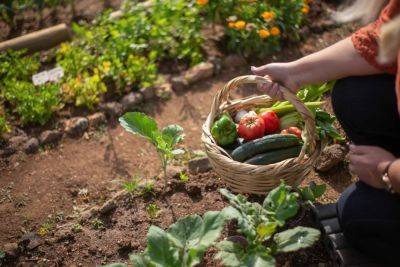
Understanding the importance of crop rotation in your vegetable garden
Collaborative post

Handy Vegetable Harvesting Guide
Handy Vegetable Harvesting Guide Not sure when is the best time to harvest different vegetables? Check out our handy guide to learn about the signs of ripeness (and overripeness!) to pick vegetables at their peak. Tips for harvesting vegetables

Maximize Your Vegetable Harvest with Succession Planting
Maximize Your Vegetable Harvest with Succession Planting Learn the secrets to extending your vegetable harvest through succession planting from Minnesota gardener Meg Cowden. 4 ways to get the most out of your vegetable garden

Favorite Vegetables to Grow & Preserve
Favorite Vegetables to Grow & Preserve Meg Cowden shares her favorite vegetables to grow, eat & preserve to extend her garden harvest each year. Grow vegetables you can also preserve

How to Grow Asparagus
How to Grow Asparagus Curious about how to grow asparagus? We'll break it down for you here! Growing asparagus

2024's Best New Garden Plants: Fruits and Vegetables
2024's Best New Garden Plants: Fruits and Vegetables Expand your palate and try growing these new fruit and vegetable introductions in your garden this year. New fruit and vegetable introductions for 2024

My Favorite Handmade Garden Gift Ever
My Favorite Handmade Garden Gift Ever Our family has a tradition of giving handmade gifts for the holidays, and this year my husband outdid himself! Homemade garden gift tradition

Seed shopping, with lia babitch of turtle tree seed
LET THE seed shopping season begin. The 2024 offerings are being loaded into seed-catalog websites, and the earliest print catalogs are already arriving in our mailboxes, as if to help soften the separation anxiety we may feel if we’ve already put our gardens to bed for the winter.

Meet Our 2023 Reader Garden Award Winners!
Meet Our 2023 Reader Garden Award Winners! These award-winning gardeners combine science with artistry to create an inspiring landscape. Take a tour with us! Introducing Our 2023 Garden Gate Reader Garden Award Winners!

Harvest season and winter storage: how to manage an abundance of food
Collaborative post
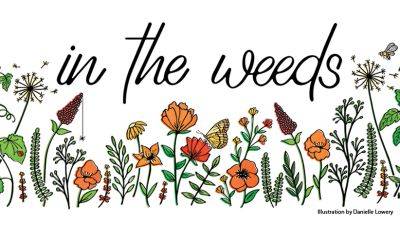
I'm A Garden Meemaw!
I'm A Garden Meemaw! There is a special moment in a gardener's life when your kids ask for garden advice for the first time. I’m a Garden Meemaw!

The Great Garden Experiment | Meet Our 2023 Reader Garden Award Winners!
The Great Garden Experiment | Meet Our 2023 Reader Garden Award Winners! These award-winning gardeners combine science with artistry to create an inspiring landscape. Take a tour with us! Introducing Our 2023 Garden Gate Reader Garden Award Winners!

4 Easy Ways to Preserve Fresh Herbs from the Garden
4 Easy Ways to Preserve Fresh Herbs from the Garden Learn how to harvest and preserve your fresh garden herbs to enjoy them all year! Enjoy fresh herbs from the garden longer by preserving them!

What does organic mean? with linley dixon of the real organic project
WHEN YOU SHOP for food—whether produce or meat or eggs—and see a label that says “organic,” what do you think that means? At its most fundamental level, I guess I always thought it meant vegetables grown on the fields of an organic farm—like, in the soil, or animals raised in its pastures.

A garden of delights, with writer ross gay
THE WORDS joy and delight figure prominently in writer Ross Gay‘s work, and so do moments he spends in his garden and descriptions of his relationship to plants. Now is that a coincidence that the garden is a main character in his books, books with the titles “Inciting Joy” and “The Book of Delights” and the latest, “The Book of (More) Delights”?

Tomatoes on Steroids
Tomatoes on Steroids Does anyone else's tomato plants go wild in the garden when they are on summer vacation, or is it just me? Tomatoes gone wild

63 funny pumpkin puns and pumpkin jokes for kids
If you’re looking for a bit of light-hearted Halloween fun, these family-friendly pumpkin jokes and great pumpkin puns are wickedly funny!

How to grow garlic: easy step-by-step guide
Would you like to find out how to grow garlic? It’s such an easy crop to grow!

How to grow shallots (+ some late-season succession tips), with k greene
The harvest video was on Hudson Valley Seed’s Instagram account, and one of that New York-based organic seed company’s co-founders, K Greene, talked with me about growing shallots and their more commonly grown cousin, garlic. He also shared some other ideas for succession sowing of edibles whose planting time still lies ahead—whether for fall harvest or to over-winter and enjoying in the year ahead. Read along as you listen to the Aug. 7, 2023 edition of my public-radio show and podcast using the player below. You can subscribe to all future editions on Apple Podcasts (iTunes) o

The Tale of Our Harvest Bowl
The Tale of Our Harvest Bowl Our harvest bowl started as the perfect popcorn bowl, but then something so heinous happened that changed the trajectory of this bowl’s main purpose forever. The evolution of a popcorn bowl

Plant These Vegetables Now for a Fall Harvest
While your baskets are filling with long-awaited tomatoes, zucchini and peppers, you might not be thinking about the months to come. But the garden season doesn’t have to end when the weather cools off. Midsummer is the perfect time to start plants for a second harvest. Here are five crops you can grow right now and enjoy in a couple of months. Happy harvesting! You Might Also Like: Best Places to Buy Garden Seeds OnlineCalculate How Many Vegetables to Plant Cool-Season Vegetables to Plant in Fall

10 easy to grow vegetables for garden beginners
Are you keen on the idea of growing your own vegetables, but not really sure where to start? This list of ten easy to grow vegetables is a great first step on your grow your own journey.

How i freeze green beans in red sauce, and 14 more food-storage tips
SO MANY GREEN BEANS, so little time. That’s how I always feel around now: how to keep up with the glut of one of my favorite vegetables. I don’t like them canned (all olive green and overcooked!) and they can lose crunch or get ice-encrusted when blanched and frozen plain, so I put mine up in canning jars in the freezer, doused in homemade tomato sauce. Read how I freeze green beans and many more garden-fresh goodies.
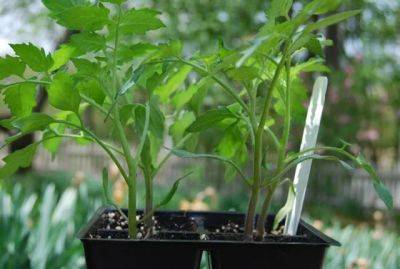
What ‘deep’ means (to a tomato)
Tomatoes will produce best if they are well-rooted, so bury them deep, right down to the topmost pair or two of leaves. They are able to root all along their stems if you plant them very deep or even sideways, in a trench. The latter goes like this: Dig a small trench about 6 to 8 inches deep and almost as long as the plant (including its rootball) is tall. Lay the plant horizontally in the trench, gently bending the top end upward, and bury all but that end with the upper pair or two of leaves. Because my soil is acidic, If I am feeling organized I give tomatoes a dose of lime in the planting hole, along with bone meal and an organic fertilizer labeled for vegetables. Some gardeners think tomatoes benefi
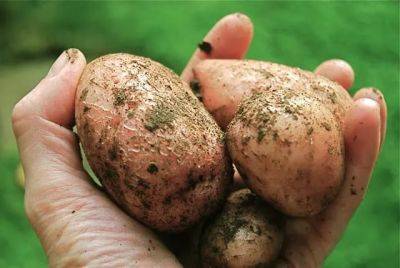
Potatoes for dinner, but not for storage (yet)
My hero James Crockett of the original vintage 1970s “Victory Garden” PBS fame said he just left the carefully dug tubers out on top of the former row for a few hours to dry a bit, then put them in burlap or mesh bags in a cool, dark place at once. Even with a few days of light exposure, the potatoes would turn green and inedible.He didn’t bother with curing the crop, exactly, which is the more conventional advice today:Dig when the soil is dry, not wet, after the foliage has died down. I normally leave them right in the ground until I am ready for them in late fall, long after the plants have faded, to reduce indoor storage time, hoping for a dry spell later in the year. First, to gauge readiness, carefully dig a hill or two of potatoes, starting about a foot outside the hill itself and working inward, since po

Let there be sweet potatoes: how to plant them
Unlike white potatoes, where you plant a “seed potato” whose eyes are starting to sprout, with sweet potatoes you start with bits of vine called slips. Glenn Drowns of Sand Hill Preservation Center in Iowa, who lists more than 100 sweet-potato varieties in his amazing catalog, explains the origin of the word slip:“A slip is a single plant (with small roots) that is sprouted on the sweet potato root and then slipped off so that you may plant it in the garden to grow a sweet potato plant.”Each slip doesn’t look like much when it arrives—a piece of vine with some roots and maybe a leaf or two, usually a little pale and worse for the wear after days in transit. But it will quickly rebound if planted promptly according to some basic guidelines (that’s the above-ground bit of one a day or two after planting,

Caterpillar alert: who’s eating my cabbage and broccoli?
Though I cannot see without a hand magnifying lens if they have the requisite tiny markings, I’m betting from its overall appearance and velvety surface that this is the larval stage of the cabbage white butterfly, Pieris rapae, because I have also seen its adult stage flying around, a smallish butterfly with a couple of smudgy spots on each white wing.This article from Missouri Botanical Garden is extremely detailed on my latest visitor, also known as the imported cabbage worm, and other pests of cabbage relatives, including cabbage looper and the caterpillar of the diamondback moth. The latter two caterpillars are smooth, not velvety, among other clues to differentiating among the three.As with all caterpillars, these can be controlle

Planting do-over’s: more beans and greens
I PUT MY BEANS UP ON A PEDESTAL because they are one of the crops that’s finally producing here in the Year of Big Rains. In fact, I just planted another whole row of bush beans, along with more collards and kale, among many things. Welcome to Week 3 of the cross-blog Summer Fest 2009: Beans and Greens Week, a perfect time (if you hurry) to fine-tune the vegetable garden and eke out some produce for late summer, fall—and beyond.

Grafted tomato plants: a juicy followup
I’d first read of the tactic being used commercially, particularly in greenhouse growing, to improve yields from less-vigorous varieties like some heirlooms, and counter certain tough conditions or diseases. Now it’s available to the home gardener, too–and you don’t even need a razor blade or grafting clips of your own.The extensive article I wrote last January on tomato grafting explained all the steps, with help from a video from Ohio State.Our plants did fine; the grafts took easily, once the initial awkwardness of the slice-and-dice-and-reconnect motions were semi-mastered. Matching up rootstock (which you behead) with a scion (the top of another plant, the one you want the tomatoes from) was the
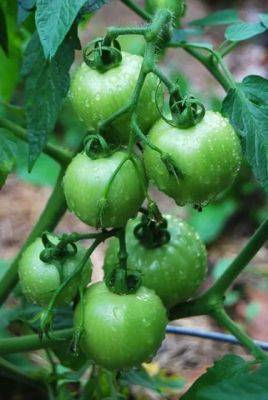
Waiting, waiting (for a ripe tomato)
I’m hoping some of my 2008 progeny will start turning red, but if not, I have a stash of green-tomato recipes. (For now I’ll hold onto them, as it’s not yet time to give up…look for them in a few weeks here, and enjoy the Oven-Roasted Tomato idea down at the bottom of this post meantime.)But really, I marvel each summer-into-fall when I stock my freezer with the harvest turned to many quarts of sauce: How did I even get one ripe fruit, considering what could have happened?No fruit. Only green fruit. Fruit with spots. Fruit with black bottoms. Fruit with cracks. Fruit eaten by marauders of every taxonomic order.Tomato leaves spotted. Or dropping off. Or eaten and just plain gone (ho

Tomato taste test: ‘juliet’ plum, farm-market find
The fruits of ‘Juliet’ are somewhere between a plum and a grape or cherry type of tomato— just 2 inches long or so—and borne in clusters of 12 to 18. They’re small enough that I simply halved them (above) for the skins-and-all quick tomato sauce that I freeze 40 containers of each year. I am fascinated with this rich-tasting little plum, now bubbling happily on the stove. Johnny’s Selected Seed rated indeterminate ‘Juliet’ as their most disease-resistant variety in trials (no small honor), I learned today.I have Roberto Flores, the self-proclaimed Dirtmeister at Good Dogs Farm in Ashley Falls, Massachusetts, to thank for growing the brimming bag of ‘Juliet,’ and my crafty neighbor Susan Schneider of Shandell’s, who scooped them up for me yesterday, knowing I’d been complaining about being a bag or two short. And I have the Millerton, New York, farmers’ market to thank, too—appreciation all around, friends.Have you grown ‘Juliet’ (pac

Thinking about saving seeds, with ken greene
First, of course, you want to make sure the crop you’re considering saving seed from is open-pollinated, not a hybrid. Hybrids won’t “come true” from saved seed one generation to the next.“Start with the super-easy things,” said Ken, “like anything with a perfect flower and a pod—beans, and peas, for instance.” Perfect flowers contain both male and female parts, or stamens and pistils, such as lettuce, tomatoes, brassicas, beans; in imperfect ones, such as on squash and cucumbers, there are separate male and female flowers.“Before you even transplant your first seedling, you can start thinking about seed saving,” Ken said, and also wrote in a new article on the Seed Library blog.For beginning seed-

Sowing spinach
IT IS NEVER TOO EARLY to plant spinach, and in fact I often feel as if I am running behind on that score. Even though there are snow squalls predicted for later this week in my area, it’s time. Last September through Thanksgiving would have been even better.
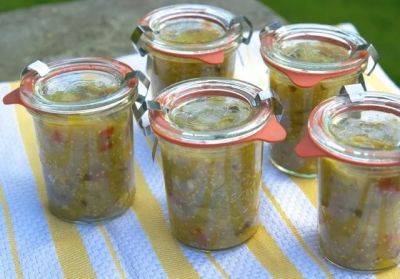
Roasted tomatillo salsa (or is it more like jam?)
Everyone usually agrees that tomatillos, garlic, onion, peppers and cilantro are the basic ingredients involved, but do you simmer your tomatillo salsa on the stovetop, or simply pulse-then-blend the raw ingredients together? Perhaps it’s best to roast it in the oven till the whole thing transforms from a thin-into-thickening slurry, and finally to something more like a loose and glistening jam?On the word of my friend You Grow Girl, Gayla Trail, I went with the roasting-pan method.Since I planned to freeze (rather than can) about a dozen small jars, I didn’t have to worry about a perfect balance of acidity, or what other ingredients I added. I simply went by eye, and taste. In my first batch, I was timid about the hot peppers; in my second, I went a little bolder.

Refresher course: thinking about starting seeds
IT’S TOO EARLY HERE to start anything for the vegetable garden but leeks and onions, as I mentioned in the March chores, but it’s never too soon to brush up on seed-starting timing and tactics. To that end, a little refresher course:
Popular Topics
Our site greengrove.cc offers you to spend great time reading Vegetables latest Tips & Guides. Enjoy scrolling Vegetables Tips & Guides to learn more. Stay tuned following daily updates of Vegetables hacks and apply them in your real life. Be sure, you won’t regret entering the site once, because here you will find a lot of useful Vegetables stuff that will help you a lot in your daily life! Check it out yourself!
